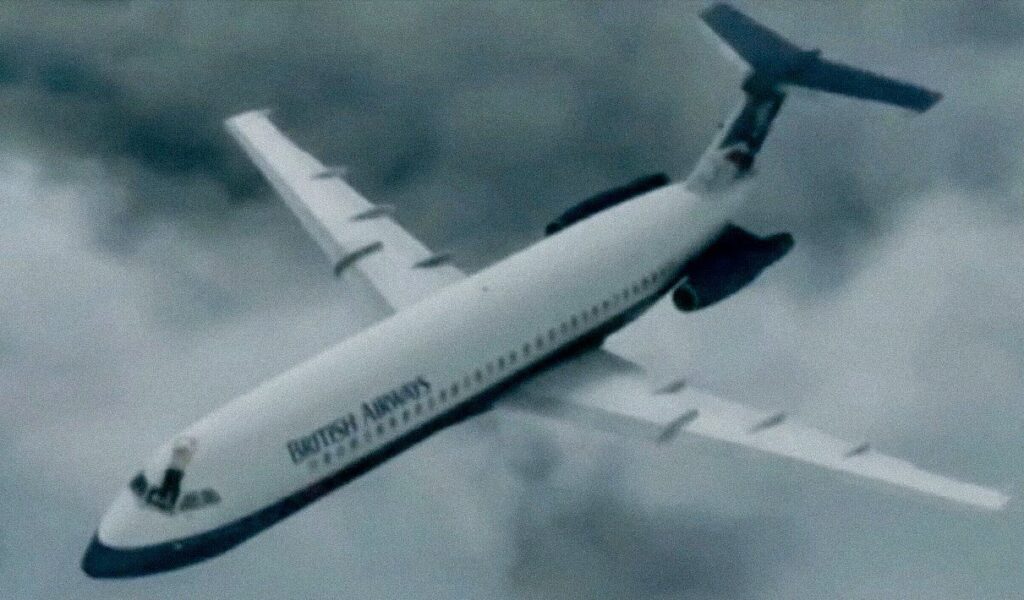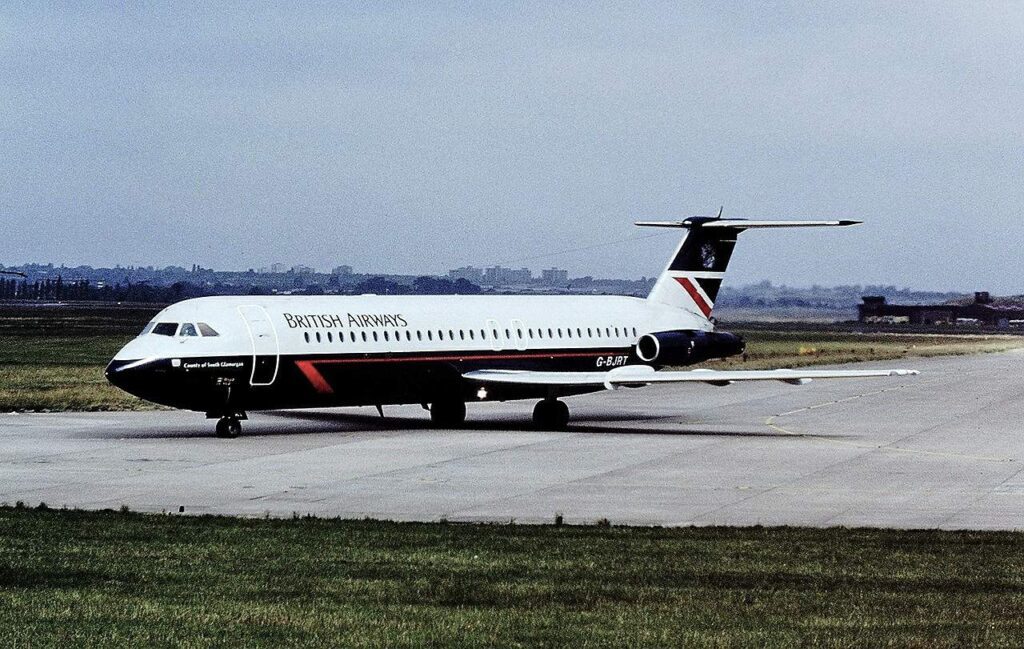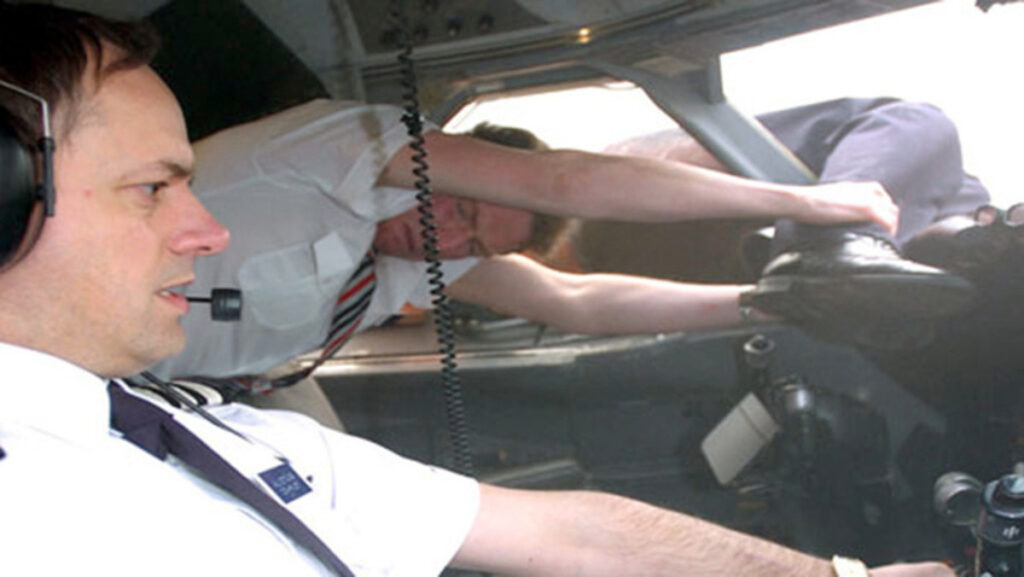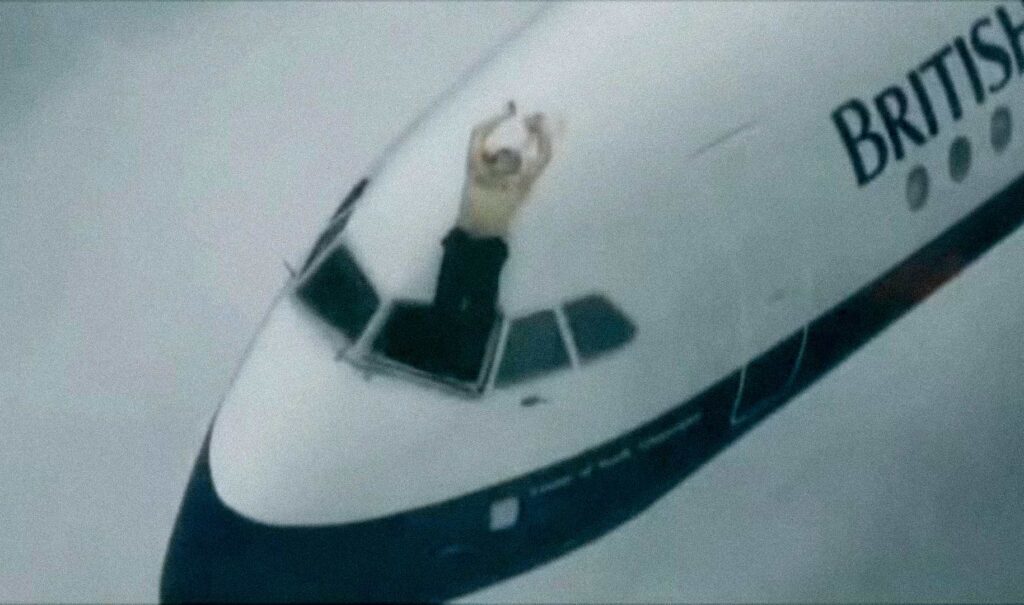Sometimes miracles don’t just happen in movies. To say, life is full of miracles and the incredible story of this pilot of British Airways Flight 5390 is a veritable example of this.

In 1990, a plane from this British company took off normally to Malaga. Everything seemed to be going from strange to stranger when one of the cockpit windshields blew into the air. The aircraft was at an altitude of 5,000 metres and its pilot was about to experience what, unfortunately, would be the most dramatic story of his life ― he sucked out of the window and, miraculously, survived.
The British Airways Flight 5390 Accident

On June 20, 1991, one of the most unusual incidents in the history of aviation took place. During a British Airways flight from Birmingham to Malaga, one of the aircraft’s cabin windscreens broke and this caused Captain Timothy Lancaster to be sucked out of the window due to the sudden depressurization. Miraculously, the captain survived the accident thanks to the help of flight attendants and the expertise of the co-pilot, Alison Atchison.
Captain Timothy Lancaster suffered one of the scariest accidents in the history of commercial aviation. He was exposed to winds of more than 600 kilometres per hour and temperatures close to -17 °C for more than 22 minutes.
When they were at 17,000 feet (approx 5000m), while the flight attendants were serving drinks and the pilots waited for breakfast, Captain Lancaster’s side windshield ruptured. The sudden decompression jolted the plane, ripping the cockpit door and dragging the pilot’s body outward. However, he did not fly off thanks to his legs still tucked under the controls.

Nigel Ogden, one of the crew members, noticed the situation and managed to grab Lancaster, who was being pressed against the fuselage due to the wind and speed, although he was starting to freeze due to the low temperatures.
After few minutes, Ogden, still holding on to Lancaster, was by now developing frostbite and exhaustion, so chief steward John Heward and air steward Simon Rogers took over the task of holding on to the captain. They all tried their best to get Lancaster back into the cockpit, but it was impossible due to the high-speed wind.

By this time Lancaster had shifted several inches farther outside and his head was repeatedly striking the side of the fuselage. The crew believed him to be dead, but Atchison told the others to continue holding onto him, out of fear that letting go of him might cause him to strike the left-wing, engine, or horizontal stabilizer, potentially damaging it.
An emergency landing: Timothy Lancaster still hanging out the cockpit window
Meanwhile, co-pilot Alastair Atchison alerted the control tower about what had happened and proceeded to make an emergency landing. Without waiting for an answer, he began the descent, even running the risk of crossing into the path of other planes. Eventually, Atchison was able to hear the clearance from air traffic control to make an emergency landing at Southampton Airport in the UK.
The air stewards managed to free Lancaster’s ankles from the flight controls while still keeping hold of him. Fortunately, at 08:55 local time (07:55 UTC), the plane landed safely at Southampton and the passengers disembarked using boarding steps.
Pilot Timothy Lancaster was alive
After spending nearly 22 minutes exposed to winds of more than 600 kilometres per hour and temperatures close to -17 °C, Captain Timothy Lancaster was treated and taken to a hospital alive. He made his recovery within weeks and returned to work after less than five months.
The cause of the accident
Subsequent investigations revealed that the windshield rupture occurred because of some bolts that were thinner and smaller than usually were used, which had to withstand the pressure difference between the cabin and the exterior. In other words, the accident took place due to faulty maintenance.
They were awarded
First Officer Alastair Stuart Atchison and cabin crew members Susan Gibbins and Nigel Ogden were awarded the Queen’s Commendation for Valuable Service in the Air. Atchison was also awarded a 1992 Polaris Award for his ability and heroism.
After reading the incredible story of Timothy Lancaster, read about the fascinating case of Juliane Koepcke, the girl who fell 10,000ft and survived a fatal plane crash!




